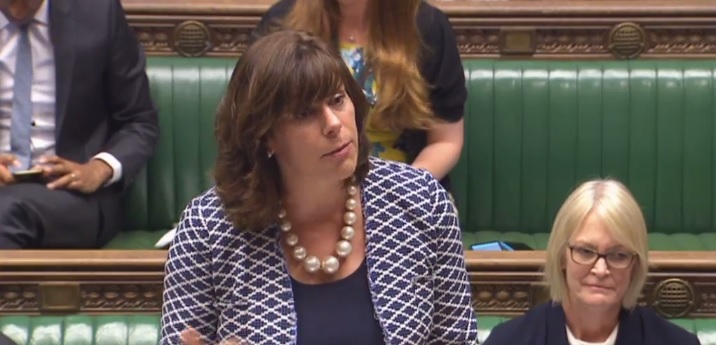
Energy and clean growth minister Claire Perry has hinted that the government’s forthcoming post-2019 solar direction could deliver a “really positive” set of outcomes for the industry.
Perry addressed the audience at the All Energy exhibition and conference in Glasgow this morning, discussing the successes of the renewable energy industries of England and Scotland, before a media briefing.
Speaking to journalists, the climate and energy minister hinted that the forthcoming solar strategy “ought to have a really positive set of outcomes”.
And Perry further apologised for delays to its publication, squaring its absence with both the need to assess professor Dieter Helm’s cost of energy review and the department’s desire to “get it right”.
“What we need to do, in a world where prices are falling so dramatically, we have a known subsidy pot and we have a known set of challenges, and I feel there is almost this inflexion point where we’ve got to really set out hard what we want to do,” she said.
Last year’s Clean Growth Strategy, the central piece of legislation setting out how the government intends to meet its fourth and fifth carbon budgets, pledged the release of a post-2019 solar strategy before the end of last year. That strategy would seemingly address the post-subsidy climate for solar in the UK, with the last of the subsidies – the remaining feed-in tariff period – closing to new applicants from 1 April 2019.
However the strategy has yet to see daylight, and today Perry said her department was “working hard” to “put more meat on the bones” of some of what was pledged within the Clean Growth Strategy.
While Perry offered no indication as to what measures may be addressed in the strategy, she did state that solar “absolutely… continues to have a really important part in the mix”.
“It’s part of the distributed energy supply and there are opportunities to do larger scale deployment,” she added.
What the post-2019 strategy could or should entail has been the subject of some debate within the industry, with most observers stressing the need for only minor legislative tweaks to “level the playing field” between solar and other generation technologies.

